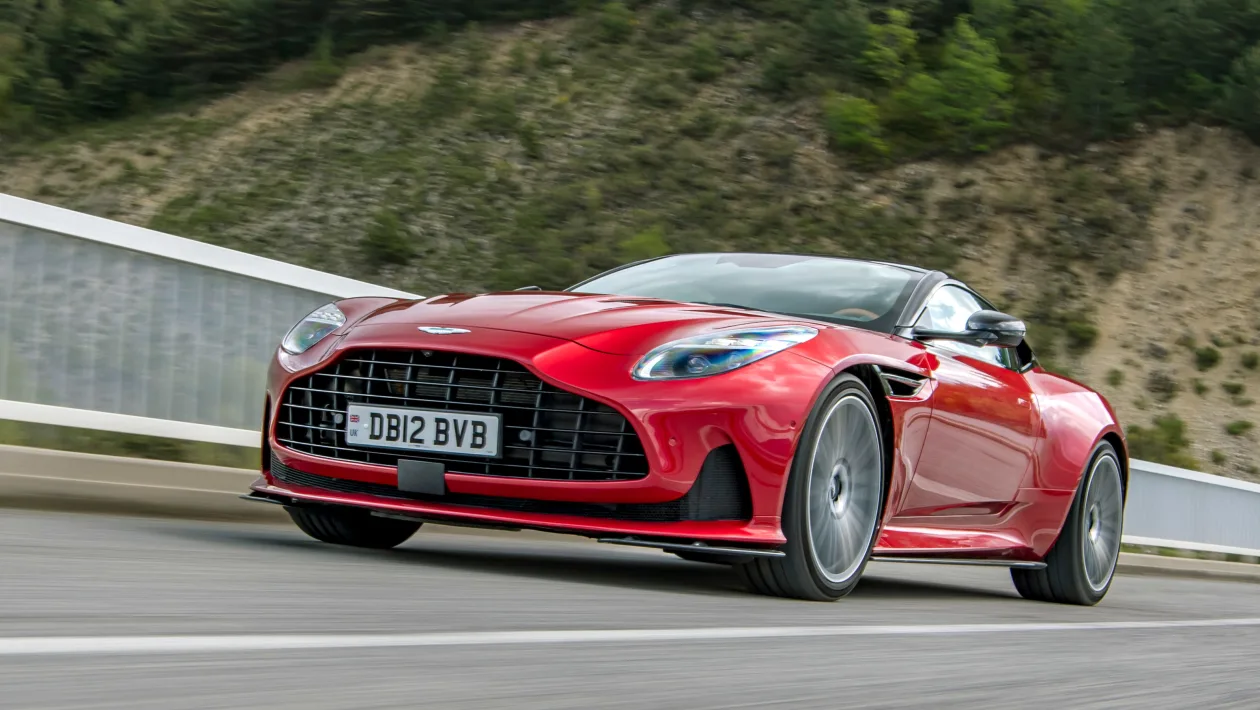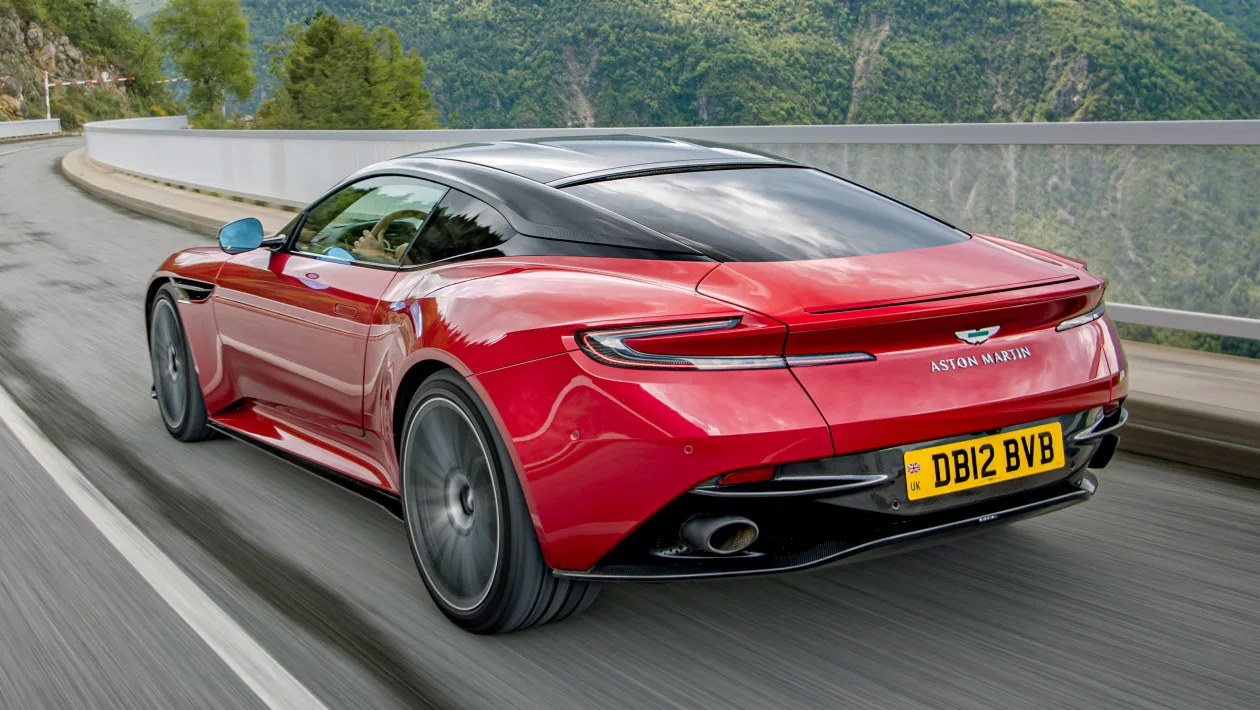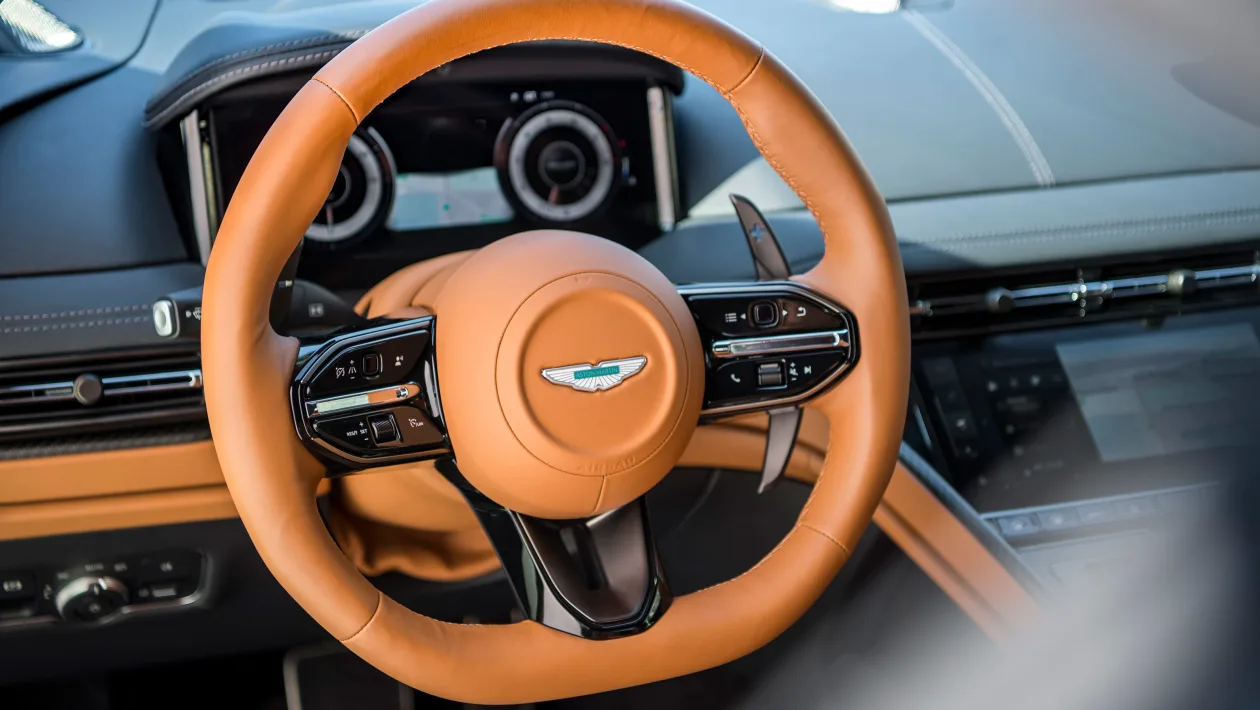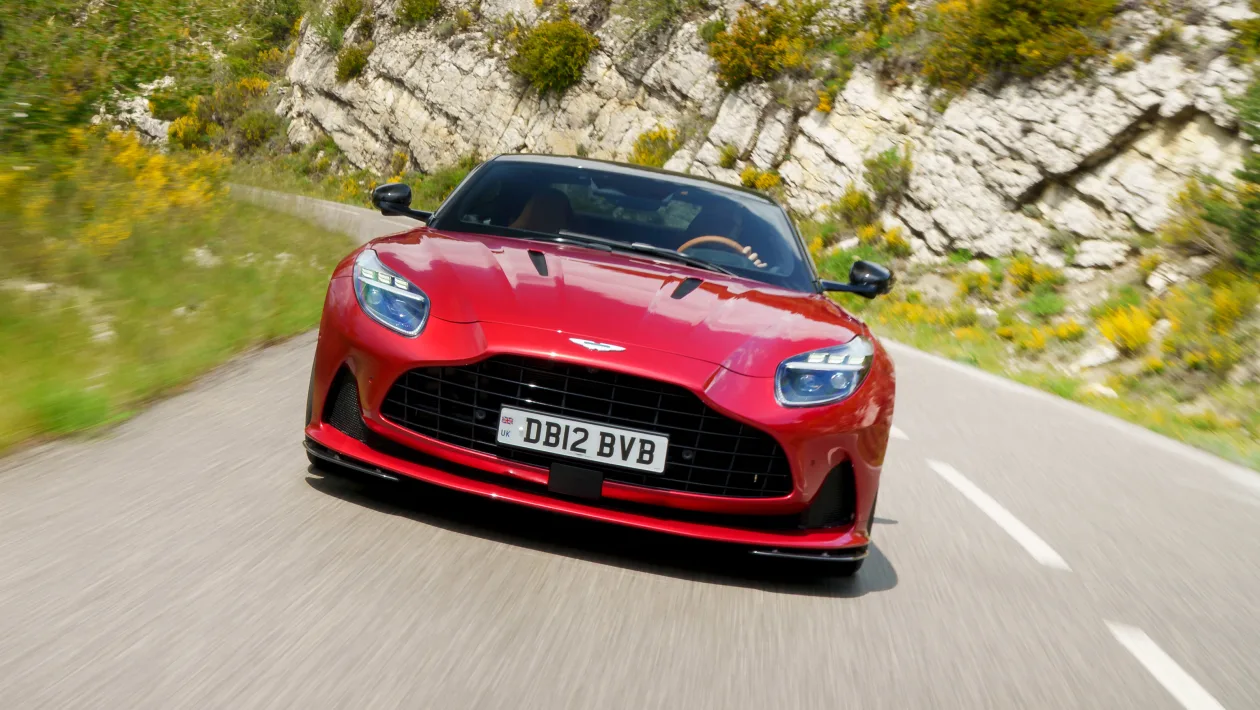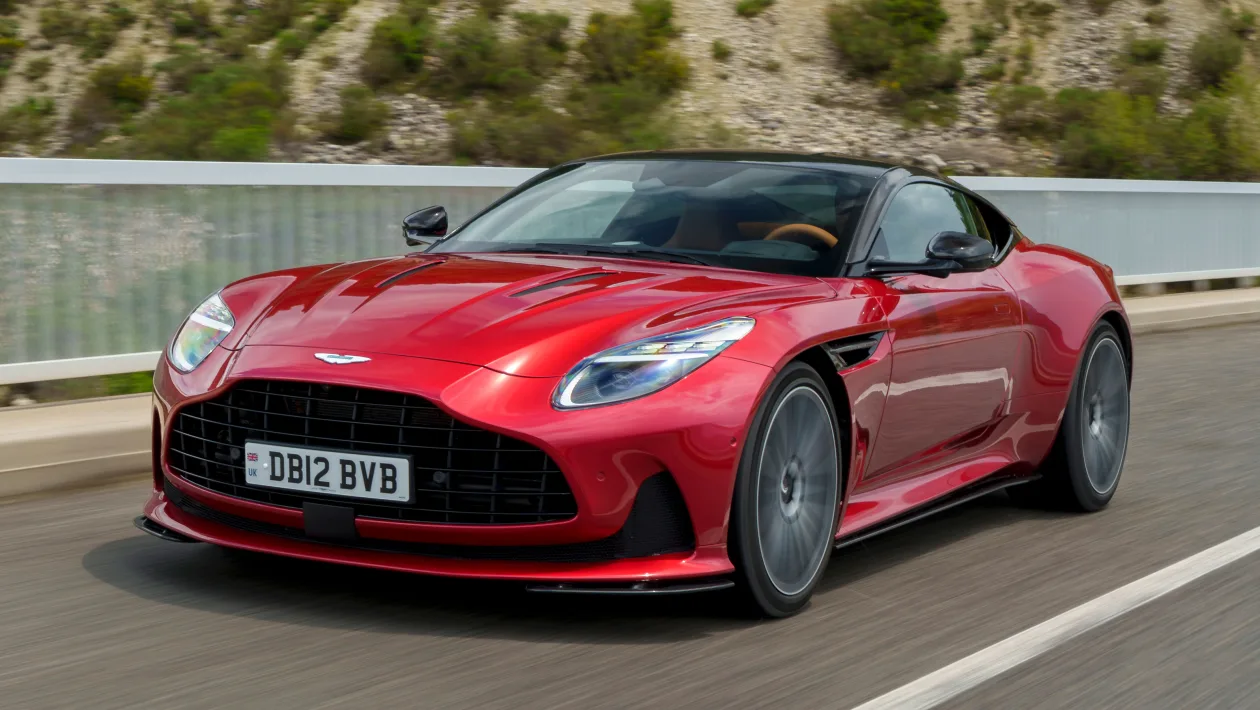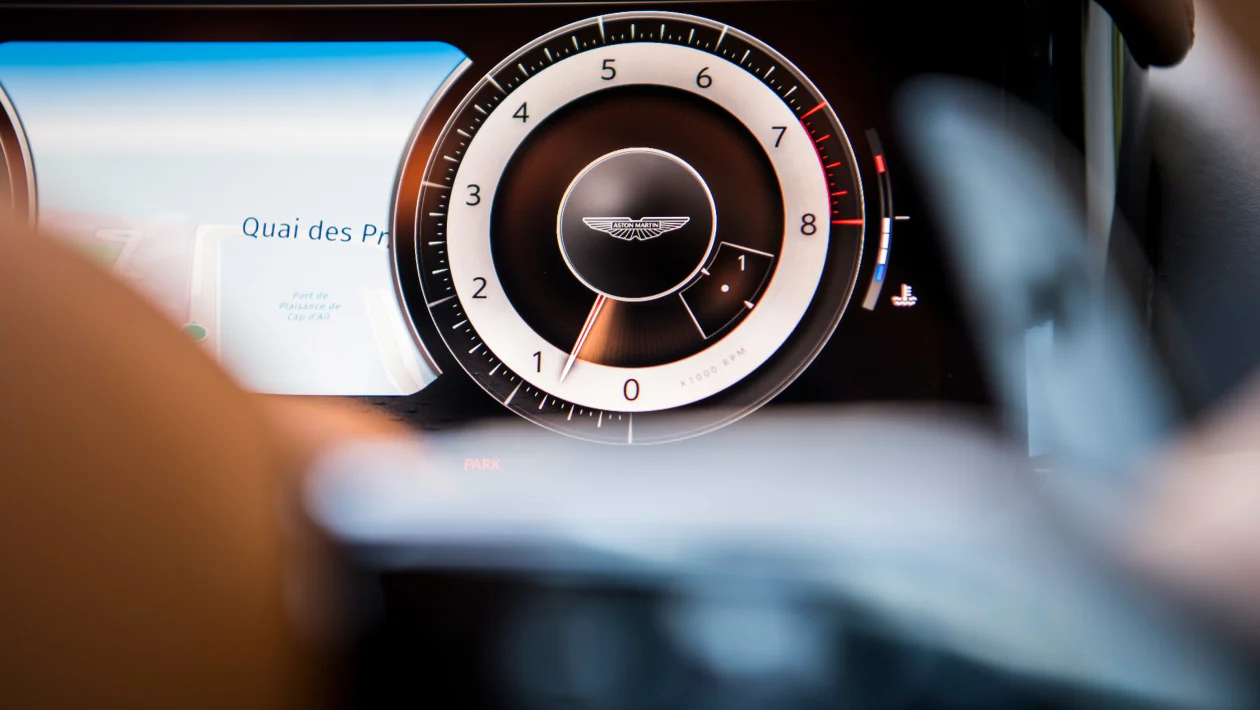Grand tourer replacement for the DB11 packs a 500kW V8, and has the Bentley Continental GT and Ferrari Roma in its sights.
On the launch last year of the Aston Martin DBX 707, a heavily overhauled version of the DBX, we were given the obligatory show-around of the car. All was going well until we got inside and I prodded the screen on the dashboard. “Yeah… that’s still not a touchscreen,” came the awkward reply.
However spectacular Aston Martins look, sound and perform, nothing screams ‘old tech’ these days more than a large display screen in the middle of a dashboard that you can’t operate by touch (whether touchscreens are a good thing is another debate, but you get what I mean…). On a car launched in 2022, as the DBX 707 was, and built by a car maker positioning itself at the very top of the industry, it wasn’t really good enough, however fantastic the rest of the car was.
Thankfully, the Aston Martin DB12 has a touchscreen. The software it runs is not perfect, the fonts are a bit small and some of the menus are too well hidden, but the engineering team will be working on this right up until the start of production in a few weeks’ time. They’ll get there. Of bigger significance is the fact that the screen exists at all, that you can prod it with your fingers and that the software is all of Aston’s own design rather than being a Mercedes hand-me-down.
The addition of a touchscreen is not the most obvious starting point for a 542kW GT car from a lineage as famous as that of the Aston DB (I’d need to check our archives, but I doubt the contemporary DB5 review opened on the switchgear) yet its arrival has corrected such an obvious shortcoming in the old DB11, one that became emblematic of the general apologetic tone surrounding the company. There are no more excuses now.
Despite the name change from DB11 to DB12, this is not an all-new car as was the leap from DB9 to DB11. But the DB12 is the kind of heavy-duty facelift that you can still credibly call a new car. Enough has changed, particularly under the skin and throughout the interior, that it warrants a new name. Aston Martin says the hardware is 80% new from DB12 to DB11 and the software 100% new.
From some angles, in particular the rear and in profile, you still see the DB11, yet both the head-on view and the overall proportions look like a big step forward and worthy of a new name. In the metal, it’s easy to tell the DB11 and DB12 apart: the DB12 is wider and more purposeful and looks like it has far greater sporting intent. Indeed, the company doesn’t call it a grand tourer now but a super tourer (no, not like the ones from the 1990s’ BTCC). Apparently, “grand is not enough” to describe the car, which sounds like a cross between a Bond film and what’s needed to pay the average energy bill these days, but I understand what they mean.
The mechanical changes are pretty extensive. The sole option for now is a V8; there is no V12 this time. It’s still an AMG twin-turbo 4.0-litre unit but given an extensive overhaul with larger turbos, improved cooling, optimised cam profiles and a tweaked compression ratio. Power is boosted by a whopping 125kW to 500kW, while torque increases from 695Nm to 800Nm. The 0-100km/h time is cut by almost half a second to 3.6sec and the maximum speed sneaks above 320km/h, to 325km/h.
A ZF eight-speed torque-converter automatic remains on the DB12 and an e-differential links with the stability control system. The e-diff is said to go from fully locked to fully open in milliseconds, in order to boost agility and responses.
The DB12’s aluminium body is marginally stiffer (by 7%) than that of the DB11, but the real change in the chassis is the fitment of new adaptive dampers that, says Aston, have 500% greater bandwidth than those they replace.
With all this newness and breadth of ability, it’s a surprise that initially I feel a bit clumsy driving it, and I’m quite jerky with the controls. The brakes need quite a squeeze on the approach to a corner, and when you floor the accelerator you’re catapulted backwards. You need to recalibrate just how quickly everything comes at you in the DB12 versus the DB11, because it is faster and more capable everywhere. Your brain takes a while to realise that this is something altogether different.
We spent some time with Aston chairman Lawrence Stroll who, in a throwaway but deliberate remark, called the DB11 “slow”. The engineers clearly took that to heart, as the DB12 is brutally fast, more DBS than DB11 in that respect. Responses are almost instantaneous at any speed. Even so, the eight-speed auto is nicely matched to the engine with a more GT, sorry, super tourer positioning in mind. The gearshifts don’t want for any extra crispness or the savageness that a dual-clutch auto would bring. The engine sounds suitably epic, too, although not quite as deafening as Aston’s V12.
We drove the DB12 on two of France’s great roads: the Route Napoléon and the Col de Vence. The former has lots of hairpins and second-gear corners, the latter more in the way of faster third-gear turns. The DB12 was better to drive on the Col de Vence and more fun with it, with superb body control, flowing and stable handling and so much grip. Compared with the DB11 it feels a good bit stiffer than the 7% improvement figure suggests, and it comes alive as an exciting sports car in higher-speed corners. You crave the next one as soon as you’ve exited the last. The flipside is that the DB12 can feel frustrated at lower speeds. Its size becomes apparent, and the diff and transmission calibration aren’t quite there for slower-speed cornering thrills. There’s clear room for the new Vantage below the DB12 in pure agility terms, even accounting for the bigger car’s more sporting positioning.
Perhaps most transformative of all, even more so than its extra speed and breadth of agility, is the ride and comfort, which best manifests around town. Aston wasn’t kidding when it said the breadth of the dampers’ ability had increased. Sure, you have to place the car carefully, but you’d never guess you were in something so sporting and powerful given the low-speed refinement and comfort. It’s not intimidating at all. Our test route didn’t include many motorway miles, but it seemed formidably long-legged here, too.
After a day of familiarity, though, still not all of the controls were falling easily to hand. Credit to Aston for not putting everything on the touchscreen, but it has the feel of a first-generation layout in the way physical and digital controls mix. Further usability refinements are to come, with seven more front-engined sports cars, including derivatives, to follow the DB12 over the next two years. Even so, the lift in perceived quality, technology and comfort is big, and this new interior successfully addresses the DB11’s biggest shortcoming.
The DB12 as a whole should be considered a success too. It adds further intrigue to the segment, and the Aston has never felt further away from a Bentley Continental GT, which goes harder on comfort and refinement; the switch to DB12 from DB11 has brought Aston closer to the Ferrari Roma.
The Roma deserves greater attention and wider acclaim than it has received, but it has been overshadowed somewhat by sharing a line-up with some of the greatest mid-engined Ferraris ever conceived. It is incredibly involving and exciting to drive while also doing fine work as a continent-crushing GT. The Roma, though, doesn’t have to worry about creating room for a model below it in the range, unlike the DB12’s relationship with the Vantage.
A back-to-back test between the pair would nonetheless be a very close-run thing, even if this tester thinks the Ferrari may just edge it for having an even broader skill set. That is to come, and it will be one of the year’s great battles.
For now, let’s celebrate the DB12, which has got Aston back to the sharpest end of the industry once more and a deserved seat at the top table as a car maker and a brand. It has nothing for which you need to make an excuse, and that has been a long time coming from Aston.




